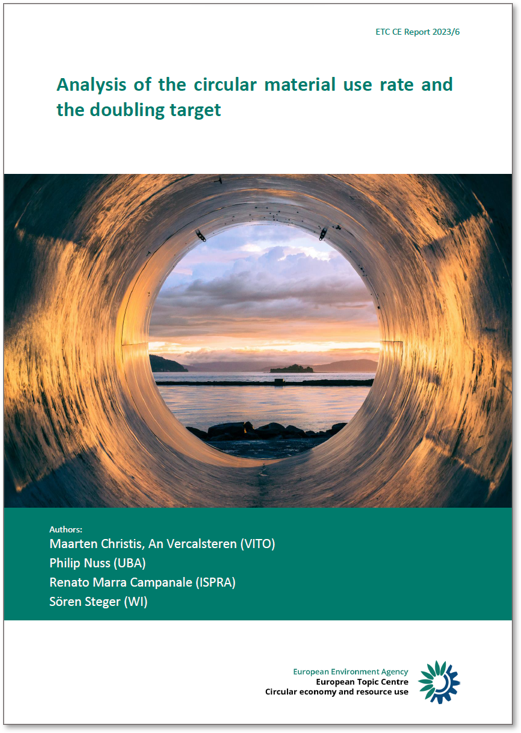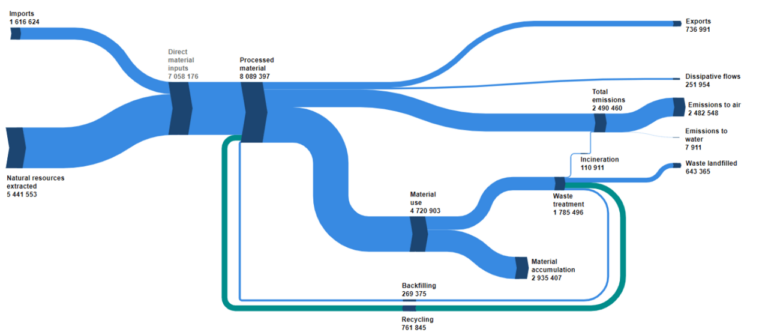The Circular Economy Action Plan (CEAP), released in 2020, sets an aspirational goal of doubling the circular material use rate (CMUR) in the EU within the next decade. The CMUR, which quantifies the reuse and recycling of materials, was at 11.7% in 2020, marking a modest increase over the years but indicating a challenging path ahead to meet the ambitious target.
The CMUR’s trend is influenced more by overall material consumption than by recycling rates alone. However, recycling does impact the CMUR across different material categories. For instance, metals and non-metallic minerals currently have the highest material-specific CMURs. Non-metallic minerals, which constitute over half of material consumption and recycled waste, are identified as the critical leverage point for CMUR enhancement.
When considering the environmental impact, fossil fuels and biomass, with the lowest CMURs, are responsible for the majority of the EU’s environmental footprint from material use. Therefore, policy focus from an environmental standpoint should be on reducing the consumption and increasing the circular use of these materials.
To achieve the CEAP’s target, the CMUR could potentially rise to 22.4% by 2030 with a mix of strategies, such as boosting recycling rates, reducing material inputs, and significantly cutting down fossil fuel use. A longer-term scenario for 2050 suggests that with aggressive measures, the CMUR could reach 38.6%.
The European Commission’s target is a substantial commitment requiring swift and coordinated policy actions, including material efficiency and a sharp decline in fossil fuel consumption. Recycling improvements alone are insufficient for attaining the CMUR goal.
The report also acknowledges the positive impact of using industrial by-products and production residues on the CMUR. These practices can reduce the demand for new materials, thereby lowering the Domestic Material Consumption (DMC). However, the effect is smaller than the use of officially recycled materials, which contribute to both reducing the DMC and enhancing the recycling loop.
The production of secondary materials must be environmentally efficient, ensuring that the benefits of recycling outweigh the additional impacts of processing. The report emphasizes the necessity of decoupling material use and environmental impacts from economic growth to achieve sustainability.
Strategies to improve the CMUR should differentiate between fossil fuels and biomass, and metals and non-metallic minerals due to their distinct consumption and recycling patterns. For the former, the focus should be on reducing consumption and transitioning to renewables, whereas for the latter, the emphasis should be on both input reduction and recycling.
The report suggests that future CMUR assessments could incorporate environmental impacts, proposing the development of an environmentally-weighted CMUR. Two caveats are noted: the data used does not account for the effects of the Ukraine war and related policy shifts, and the CMUR is currently based on DMC, while a material footprint indicator might yield different insights.


